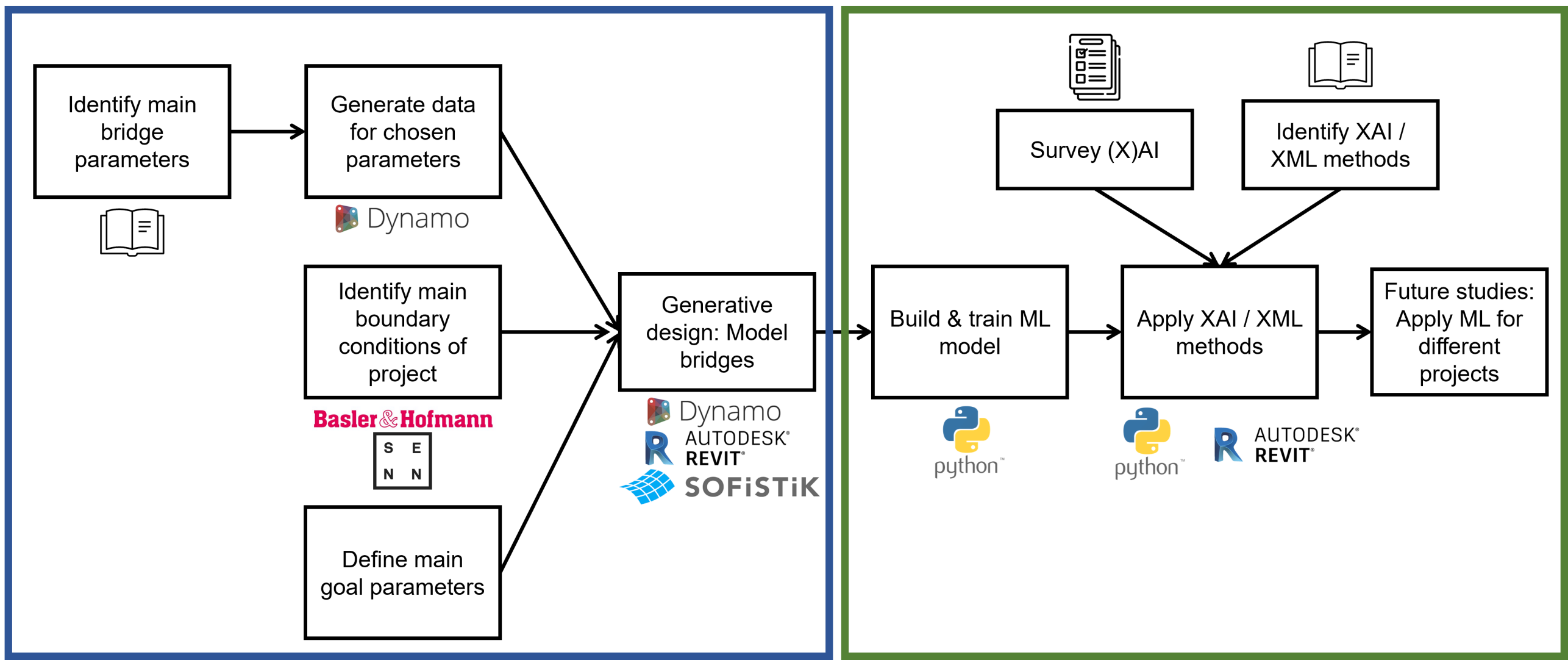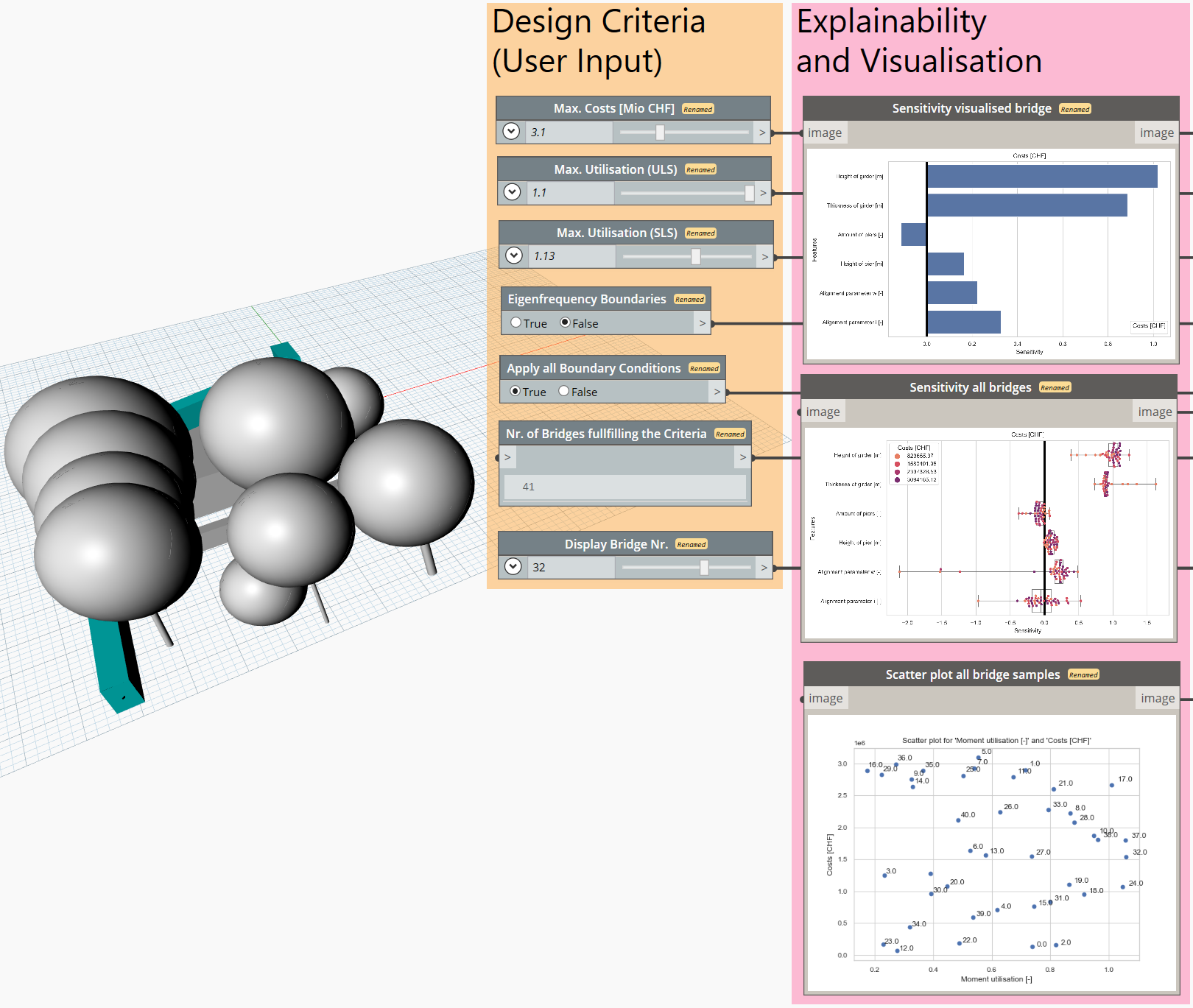Explainable Artificial Intelligence within Generative Design of Pedestrian Bridges
Author: Vera Balmer
Language: English
Abstract
For the conceptual design phase, civil engineers currently rely on their prior knowledge as well as conventional iterative design techniques upon lengthy finite element analyses of variants, which holds also true for design of pedestrian bridges. Artificial intelligence (AI) has the potential to reinvent this process by allowing for an efficient and substantially different way of design space exploration. For AI applicability, the availability of a large data set is indispensable. Such data sets hardly exist for pedestrian bridges or rely on tedious data collection processes as almost all datasets do not include performance information such as costs or structural utilisations.
The first part of the thesis suggests a new design workflow, allowing an automated parameter-based generative design of a pedestrian bridge. An object-oriented and parameter-based approach for design representation is developed upon a literature review in addition to a survey amongst researchers and practitioners. The proposed method is implemented and tested for a real pedestrian bridge project in St. Gallen using Autodesk Revit. A synthetic data set of 12'000 pedestrian bridges at a level of development (LOD) 300 is then generated. For every pedestrian bridge, six design features are sampled using a Latin hypercube scheme and thirty-three associated performance measures are collected. The latter include structural and dynamical analysis performances as well as boundary condition checks and costs. The structural and dynamic analysis is conducted in an automated, parametrised manner via a novel connection of Dynamo and Sofistik is using python and Zero-touch nodes.

In the second part of the thesis, two types of machine learning (ML) are trained to replace the traditional design process: a forward meta-model (predicting performances given design features) and an inverse meta-model (predicting design features given user-requested performances). By implementing explainable AI (XAI) models, this thesis for the first time investigates the acceptance of AI and XAI in a structural engineering design setting. A survey is conducted in combination with a literature review to choose the type of (X)AI. All XAI models are implemented within Autodesk Revit (Dynamo) upon further 18'000 generatively sampled pedestrian bridge data. A decision tree with intrinsic explainability serves as the forward model. A conditional variational autoencoder (CVAE) is developed to furnish the inverse model, where explainability is gained through evaluation of individual and batch design sensitivities, cf. Figure 2.
Both, the forward and inverse model yield fast computational times compared to traditional design methods and intuitive solutions compared to analytical models. By comparison of the models among each other the coherence of the XAI is verified. Hence, this thesis successfully establishes a workflow for implementing XAI within conceptual pedestrian bridge design problems by applying two different meta-models and a generatively designed data set. The study at hand therefore paves the way for future development of XAI applications in conceptual pedestrian bridge design.

